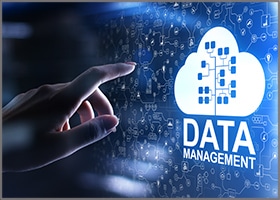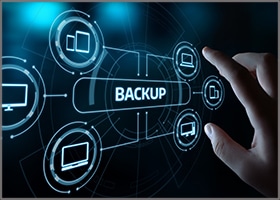
Downtime and data loss can have serious consequences for your business. Every minute you lose costs your company money, not to mention the negative impact to your organization’s reputation. The best thing you can do to protect your data is to invest in a comprehensive data protection and disaster recovery solution.
Legacy backup solutions don’t go far enough to protect your organization’s digital assets. You need a secure solution that can evolve as requirements and environments change. While there is always a level of risk for a security breach or natural disaster, there are practical steps you can take to better protect your important applications and critical data. In this article, we’ll discuss how you can develop a complete backup and recovery solution.
Your Data Is Your Responsibility
 A common myth is that cloud-based data is protected by the cloud provider. Unfortunately, this is typically not the case and many companies may be at risk for data loss if they’re not properly protecting their cloud data. For example, Microsoft is focused on infrastructure and uptime, but places the responsibility for Office 365™ data entirely with the customer. While there may be some protections that Microsoft offers, there are many gaps in coverage and it’s a real possibility that an organization could lose important data, or not cover their compliance mandates for data retention.
A common myth is that cloud-based data is protected by the cloud provider. Unfortunately, this is typically not the case and many companies may be at risk for data loss if they’re not properly protecting their cloud data. For example, Microsoft is focused on infrastructure and uptime, but places the responsibility for Office 365™ data entirely with the customer. While there may be some protections that Microsoft offers, there are many gaps in coverage and it’s a real possibility that an organization could lose important data, or not cover their compliance mandates for data retention.
New Disaster Recovery Possibilities in the Cloud
The cloud is evolving to make it easier to accomplish high availability and complete data protection. With the cloud, you can access a secure environment for backup and protection. As cloud services have matured, a new breed of cloud-based data protection and backup and recovery solutions have entered the marketplace.
Here are just a few of the features and benefits of a cloud backup and disaster recovery solution::
- The cloud makes it easier to keep a secure offsite backup, such as in the case with Veeam Cloud Connect & FirstLight’s Cloud
- The cloud acts as a disaster recovery site, with the option to automatically failover critical applications during a downtime event in a matter of minutes
- The cloud offers scalable resources, so backup data and DR compute resources can grow incrementally over time
- You don’t always have to go it alone with cloud. Many providers have engineers who can help you design and architect a solution that is right for your organization
The Cloud, Compliance, and Data Recovery
 As technology grows more commonplace and sophisticated, new compliance codes and regulations are being developed to ensure that consumer data is protected. Existing codes are also evolving to address new kinds of threats.
As technology grows more commonplace and sophisticated, new compliance codes and regulations are being developed to ensure that consumer data is protected. Existing codes are also evolving to address new kinds of threats.
A quality cloud provider can ensure compliance, security, and availability for your data. You can store your backups on-premises or in a secure data center hosted by your cloud provider. Work with your cloud provider to develop a cloud solution that accommodates your business requirements, data storage needs, testing and development environments, and compliance obligations.
Learn more about FirstLight’s Disaster Recovery capabilities and to download a free copy of the DRaaS for Dummies Ebook.




















